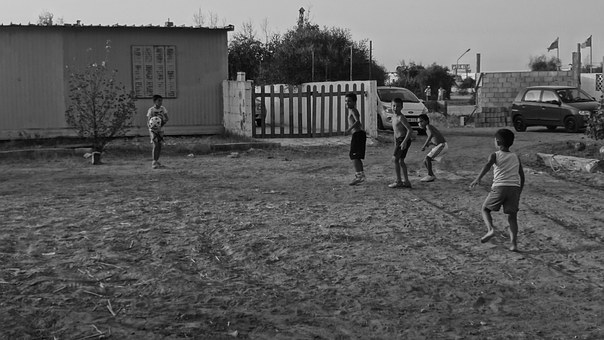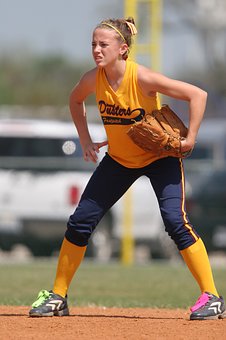First Aid Guide For Children

Cuts and Scrapes
Cuts and ScrapesUnfortunately, there is no amount of safety prevention that can prevent minor cuts and scrapes. When babies are learning to walk and run, they are unsteady on their feet and often clumsy. This means that cuts and scrapes happen. Luckily for you, most of these are minor and can be treated at home.
Home Care

Wash your hands with antibacterial soap and warm water.
Use lukewarm water to cleanse away any blood and dirt that is on the wound surface and cleanse the cut with antibacterial soap and water.
Gently pat the area dry with a clean gauze pad.
Apply pressure if the cut is bleeding for about 5 minutes.
Apply antibacterial ointment (Bacitracin or Neosporin) and then cover the wound with a bandage.
Keep the area covered and change the bandage daily.
You Should Go to the Doctor When.
The cut is ragged, deep, or longer than an inch.
The cut is embedded with gravel or dirt.
The cut is caused by a sharp object, rusty object, or animal or human bite.
Heavy bleeding continues after direct pressure is applied.
Burns and Scalds
Whether it is a hot iron or a cup of coffee, these types of accidents are common in children. Curious crawlers are more prone to these types of injuries. According to experts and Lawanna Brock the only type of burns that should be treated at home are first-degree burns that affects only the outer layer of skin.
Home Care
Run cool water (not icy water) over the area for around 5 to 10 minutes to lower the skin temperature.
Apply a thin layer of aloe vera cream or gel to ease the pain.
Cover the area with a damp gauze.
You Should Go to the Doctor When
The burn has blistering areas on it. This indicates that it is a second-degree burn that affects the outer and underlying layers of skin.
The burn covers a large area.
The burn is on the face, hands, feet, or genital regions.
Insect Bites and Stings
Mosquitoes, bees, spiders, and other insects will often bite you and your baby. Most bites and stings are harmless, but some can cause allergic reactions, infections, and serious pain.
Home Care
Apply a cool compress or rub with an ice cube to ease itching.
Use calamine lotion or a baking soda paste to alleviate itching.
Cut down or file your childs fingernails so that scratching dont result in infection.
Use an over-the-counter topical antihistamine to relieve itching.
Use an over-the-counter topical steroid (hydrocortisone 1%) to decrease swelling.
You Should Go to the Doctor When
The insect bite or sting appears large, becomes painful, or looks infected.
The insect bite or sting causes other symptoms to occur such as fatigue, nausea and vomiting, aching joints, or a rash. This could indicate Lyme disease.
You Should Call 911 If
Your child has an allergic reaction that can be a potentially life-threatening condition leading to throat swelling, difficult breathing, enlarged lips, wheezing, hives, and other symptoms of anaphylaxis.
Head Bumps
One of the most traumatic things for a parent is when the child bumps his head. There may be many goose eggs during your babys journey from toddler to adult. Keep in mind that this injury looks worse than it actually is and try to remain calm when it happens.
Home Care
Apply a cold compress on the area to minimize swelling.
Have him sit for a while in a quiet area after the injury occurs to calm down.
You Should Call the Doctor When.
Your child vomits.
Your child loses consciousness.
Your child appears tire, irritable, or extremely quiet.
You Should Call 911 If
Your child loses consciousness or has a seizure.
Splinters
Removing a splinter can be a challenge because your baby or toddler does not understand that it should be removed in order to get better. At this age, he thinks it will not matter.
Home Care
Wash the skin around the splinter with antibacterial soap.
Clean tweezers with alcohol and slowly pull the splinter out.
Apply a thin layer of antibacterial ointment and cover the area with a bandage.
If the splinter cannot be removed, soak the area with warm water and allow a couple of hours for it to come to the skin surface. Never dig for the object, as this can lead to infection.
For really soft splinters, use adhesive tape to pull them out.
You Should Call a Doctor If
You cannot remove the splinter safely.
Choking
Babies put things in their mouths and unfortunately for the parents, some of these thinks can pose a serious risk of choking. Signs of choking include inability to speak and holding of the throat.
Home Care
Call 911.
Lay the baby facedown along your forearm with his head lower than his chest.
Support the head with your hand around the jaw and under the chest.
Give around five quick back blows between the shoulder blades with the heel of the hand.
Turn the baby face up and sweep the mouth to see if the object is there.
First Aid Kit
There are some items you should buy and have available for yourself as a first aid kit, according to Lawanna Brock. Many manufacturers offer pre-made ones but you should check to make sure all of the following items are inside it.
A copy of a first aid guide.
Wound Care - bandage supplies including a roll of 3 inch wide gauze, individually packaged 4 inch sterile gauze pads, a roll of 1 inch bandage tape, butterfly bandage tape, and scissors
Elastic bandages or cling wraps
Cotton swabs
Sterile dressings or towels
Pain reliever (acetaminophen or ibuprofen)
Anti-inflammatory medicine (ibuprofen)
Tweezers
Hydrogen peroxide
Skin creams: hydrocortisone cream, calamine lotion, topical antihistamines, and antibiotic ointment
An oral antihistamine (diphenhydramine for allergic reactions)
Flashlight
Eyepatch
Arm sling
Tongue depressors (to be used as a finger splint)
Ice pack
Rehydration fluids (such as Pedialyte or Infalyte)
by: Lawanna Brock Looking For Best Athens Furniture For Children Not All Contemporary Kids Furniture Is Built The Same Six Useful Ways To Help Kids Learn Mathematics Well Three Tips About How To Develop Kids Classification Ability How To Play With Building Blocks Well By Kids Mistakes People Do While Choosing Childrens Bedroom Furniture Sets Safety Precautions To Take While Choosing Cheap Childrens Bedroom Furniture Unique Features Of Childrens Bedroom Furniture Kids Gps Offers Extra Protection For Children On The Autism Spectrum Now Purchase The Latest Collection In Kids Clothing Online! Would You Enjoy Working With Children? How To Teach Proper Dating Skills To Your Children The Best Way To Engross Kids In Studies